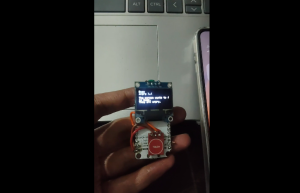
SpaceX unveils details regarding Starlink's planned Satellite Cell Service that is set to launch in 2024 to provide service to remote regions.
The much-anticipated service, Direct-to-Cell, will start rolling out in 2024 for SMS and will eventually "enable ubiquitous access to texting, calling, and browsing wherever you may be on land, lakes, or coastal waters." It would also connect to IoT devices through the LTE standard.
Starlink's Satellite Cell Service
Starlink partnered with T-Mobile on the project, initially announced last August at the "Coverage and Above and Beyond" event. The partnership will have T-Mobile set aside a bit of its 5G spectrum for use by Starlink's second-generation satellites.
Starlink will allow T-Mobile phones to access the satellite network, giving the cell service provider "near complete coverage" of the United States. During the event held in August, SpaceX CEO Elon Musk posted on X, formerly known as Twitter, that "Starlink V2" would launch this year on select mobile phones and in Tesla vehicles, as per Engadget.
The billionaire entrepreneur said in a press statement that the important thing about the situation is that it would result in no dead zones anywhere in the world for people's cell phones. He added that they were incredibly excited to partner with T-Mobile regarding the project.
The estimated launch was revised during a March panel discussion at the Satellite Conference and Exhibition 2023. It was when SpaceX VP of Starlink enterprise sales Jonathan Hofeller estimated that testing, not commercial operation, would start in 2023.
Currently, there exists a constellation of 4,265 satellites that Starlink manages that are not compatible with the new cell service. The company will have to spend the next few years launching a new series of microsats with the necessary eNodeB modem installed.
Satellite phone connectivity still requires giant, purpose-built hardware like old Iridium network phones. If the only thing that users are looking for is emergency texting, they can make do with Apple's introduction of the barely-there connectivity paradigm. This requires being inside a connectivity window, holding up a phone, and following a signal-targeting app, according to ArsTechnica.
Widespread Coverage
SpaceX's website explained that Direct-to-Cell works with existing LTE phones wherever they can see the sky. It does not require any changes to hardware or firmware or requires any special applications. The project seeks to provide seamless access to text, voice, and data.
Despite the hype for the project, the service is likely to be relatively slow compared to terrestrial standards, with estimated speeds between two and four megabits per second. However, the main benefit is in the breadth of its coverage.
T-Mobile issued a press release last year saying that the service will be available "practically everywhere in the continental US, Hawaii, parts of Alaska, Puerto Rico, and territorial waters, even outside the signal of T-Mobile's network."
The project comes as satellite connectivity has become a growing smartphone trend in recent years. According to The Verge, AT&T-backed cellular satellite company AST SpaceMobile announced that it had placed the first satellite call over 5G from an unmodified smartphone last month.
© 2025 HNGN, All rights reserved. Do not reproduce without permission.








